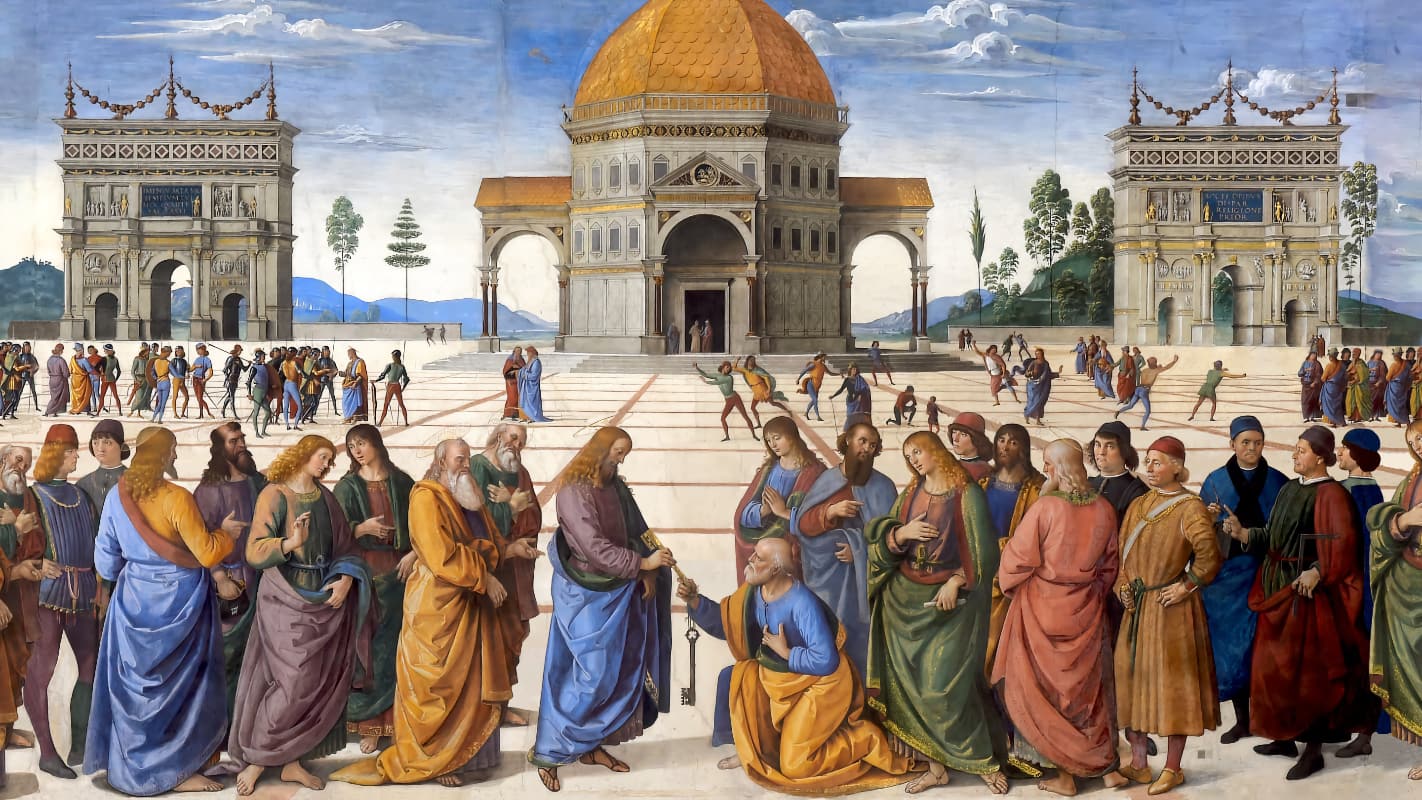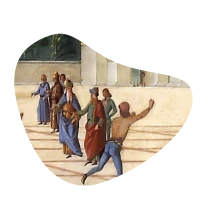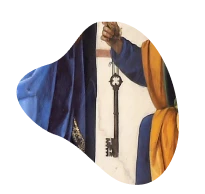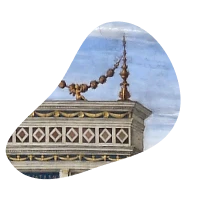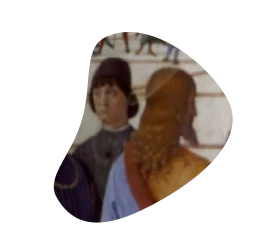Willem and I are standing in the central square of Florence. It’s a bright spring day and everybody is out, enjoying a rare afternoon without lockdown. But if you close your eyes and think of history, it’s the crackle of flames that fills this square.
It is here where the fanatical monk Girolamo Savonarola held his famous “Bonfire of the Vanities” on Shrove Tuesday of 1497. Savonarola ruled the city of Florence for four years, before power returned to the Medici family. In the same square where he had burned books, cosmetics, fine clothes, musical instruments, manuscripts, and priceless artworks, Savonarola himself was burned in 1498.

We visit the Biblioteca Riccardiana, where Dotoressa Francesca Gallori shows us a 15th century annotated Bible that almost certainly belonged to Savonarola. The annotations are tiny and manic, gathering momentum up to the Book of Revelations, which is covered in increasingly minute and detailed scribbles. During his last days in prison, Savonarola read and meditated on Psalm 51, the Miserere mei Deus, maybe from this very Bible.
We don’t know whether or not Josquin heard Savonarola preach, but interestingly on of his employers, Duke Ercole d’Este of Ferrara, who had tried—and failed—to save his old friend Savonarola, commissioned Josquin to set this exact same Psalm 51 just a few years later. While he was burning paintings, Savonarola was also preaching against elaborate polyphony, making Josquin a slightly unlikely co-conspirator. Just as Martin Luther later introduced the chorale to church music, Savonarola championed the simple Lauda form of vocal music, which was generally a single melodic line, with a focus on clear text. But Stratton Bull, founder of the Cappella Pratensis, explains how Josquin’s very direct and text-oriented Miserere mei setting actually displays a lot of qualities that Savonarola would have appreciated, and therefore might well have been conceived as a tribute to the religious reformer.
Historians are not sure quite where Josquin was between his stint at the Sistine Chapel and his arrival in Ferrara; probably Milan and maybe France. But it was his candidacy for the post in Ferrara that gave rise to a famous letter in 1502, one of the few surviving contemporary documents that actually describes Josquin. Duke Ercole d’Este was a generous patron of the arts, and his emissary Gian de Artiganova had been sent to find a new court composer. He suggested that the duke hire Heinrich Isaac, rather than Josquin. He wrote:
“To me, Isaac seems well-suited to serve your lordship, more so than Josquin, because he is more good-natured and companionable, and will compose new works more often. It is true that Josquin composes better, but he composes when he wants to and not when one wants him to, and he is asking 200 ducats in salary while Isaac will come for 120—but your lordship will decide.”—Gian de Artiganova, 1502
Ercole picked Josquin, and paid him his 200 ducats, making him the highest-paid composer of his time. It was for Ercole that Josquin wrote his Missa Hercules Dux Ferrariae, which musicologist Guido Zaccagnini explains is a kind of musical cryptogram. It is based on a so-called soggetto cavato, a musical motif derived from Ercole’s name with help of solmization—that is, giving the notes of the hexachord names (ut – re – mi – fa – so – la) and then assigning these notes to the corresponding vowels: Hercules Dux Ferrariae thus becomes E – U – E – U – E – A – I – E, or re – ut – re – ut – re – la – mi – re:
Josquin didn’t stay in Ferrara for long. He left in a hurry, fleeing the Plague; it was a wise move. The composer who took over his post, Jacob Obrecht, died of the plague in 1505. Josquin headed home, to Condé-sur-l’Escaut, to live out his remaining years in comfort and enjoy his growing fame. That had everything to do with the new technology of music printing. At the same time that Josquin was being head-hunted for the Ferrara court, he was becoming the first-ever composer to have an entire volume of published works dedicated solely to himself.
Publication then had not yet become a world of copyright and royalties. When the Venetian publishing house Petrucci published its trend-setting volume of Josquin’s masses, it wouldn’t have been in close consultation with the composer. We don’t know whether Josquin even went to Venice, though it’s hard to imagine that he wouldn’t have, given its proximity to Ferrara. The authorship of some of the published works would be debated by Josquin scholars of the future—even more so with Petrucci’s second volume of Josquin’s works. And there was no such thing as royalties. But the Venetians knew they were onto a good thing—Josquin’s was a name that guaranteed sales, and their publication further cemented his reputation. At the cusp of the 16th century, Josquin had become a brand.
Master of the Notes is a Max Music Media production commissioned by the Pierre Boulez Saal and written by Shirley Apthorp and Willem Bruls.
Born in South Africa, Shirley Apthorp grew up in Australia and studied music at the University of Tasmania. Since 1996, she has lived in Berlin, writing about music for numerous international publications including the Financial Times (UK), Bloomberg (USA), and Opernwelt. Her work has been published in the United Kingdom, the U.S., Australia, Germany, Austria, Japan, Brazil, the Netherlands, Norway, and South Africa. In 2010, she founded the award-winning non-profit organization Umculo which supports social development through music theater in South Africa. Shirley Apthorp received the Classical:NEXT Innovation Award in 2019.
Willem Bruls holds degrees in literature and history of art and works as dramaturge, author, music critic, and librettist. He has published extensively on a wide range of subjects, including most notably a study of Wagner’s Ring cycle and orientalism in opera. He collaborated with directors such as Guy Cassiers and Pierre Audi and directed several music theater productions himself. He wrote a stage adaptation of Pasolini’s Teorema for the Ruhrtriennale Festival and has given workshops on contemporary music theater, libretto writing, and youth theater throughout Europe. He serves as an advisor for the performing arts to the Dutch Arts Council.
Credits
Original Music for this podcast was composed by Karim Said and recorded by Angela Boutros, Elias Aboud, Roshanak Rafani, and Joseph Protze of the Barenboim-Said Akademie.
Excerpts from Josquin des Prez, Miserere mei, recorded by Cinquecento © Hyperion Records Ltd., London.
Excerpts from Josquin des Prez, Missa Hercules Dux Ferrariae, recorded by Peter Phillips & The Tallis Scholars © Gimell Records.
In case of violation of copyright, we kindly ask the rightsholders to contact us.
